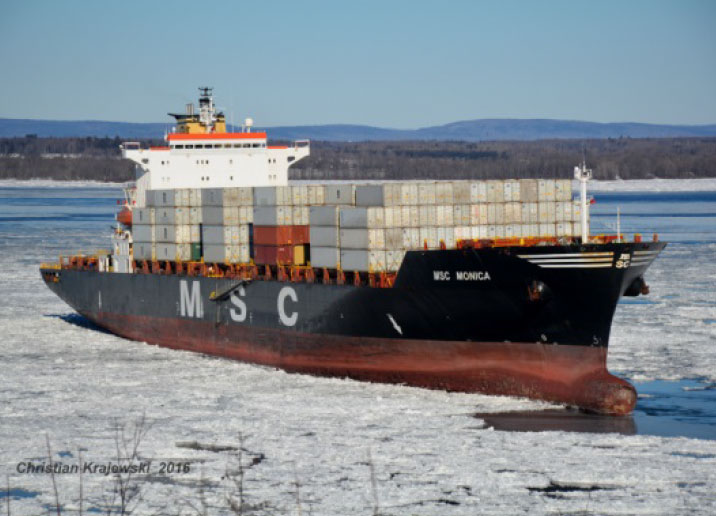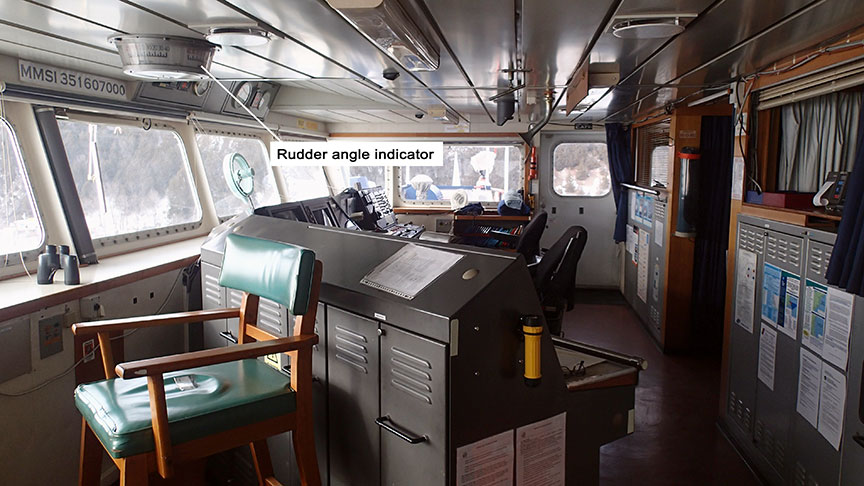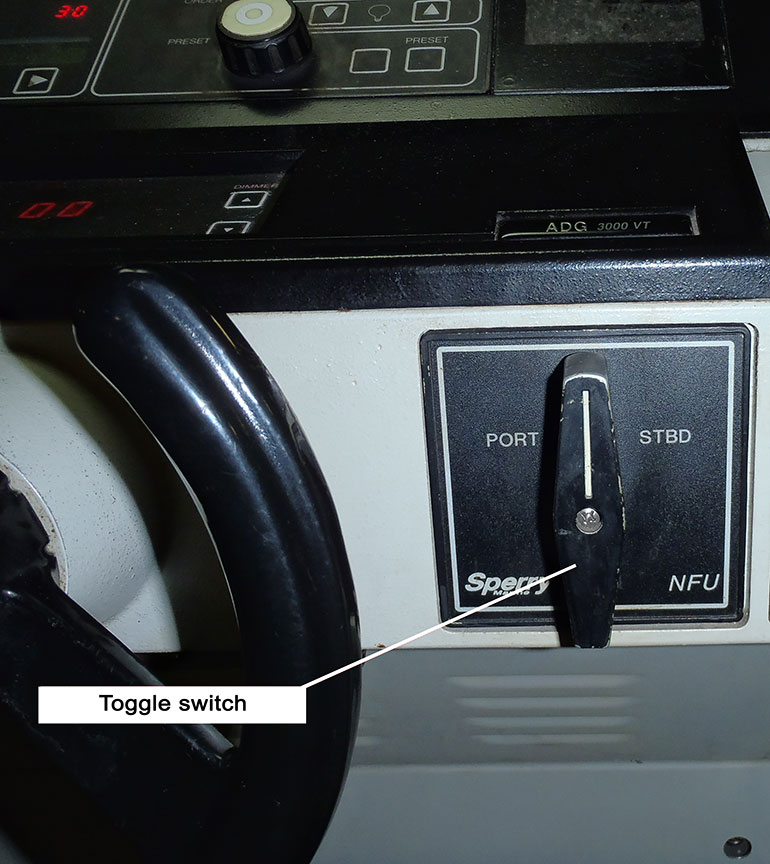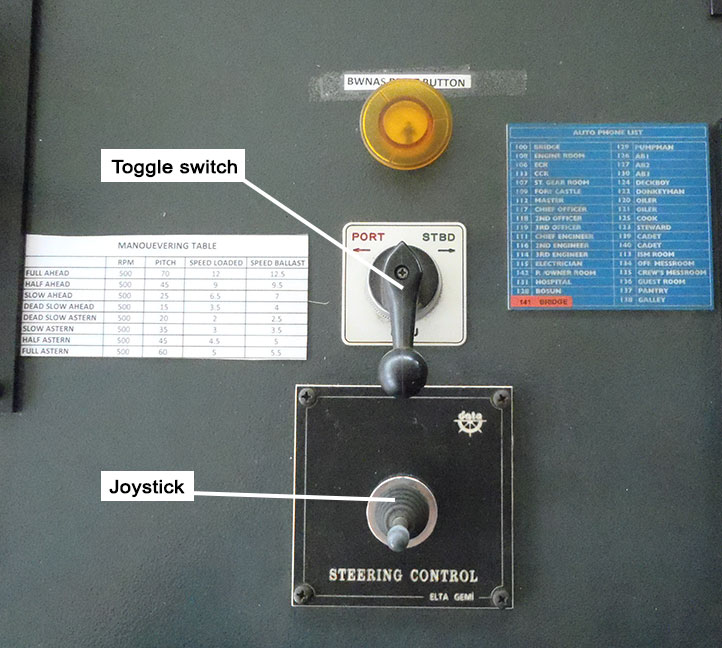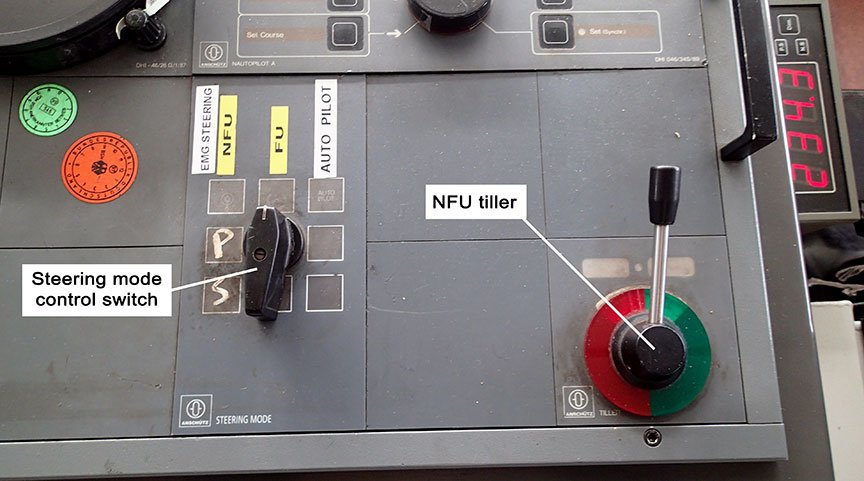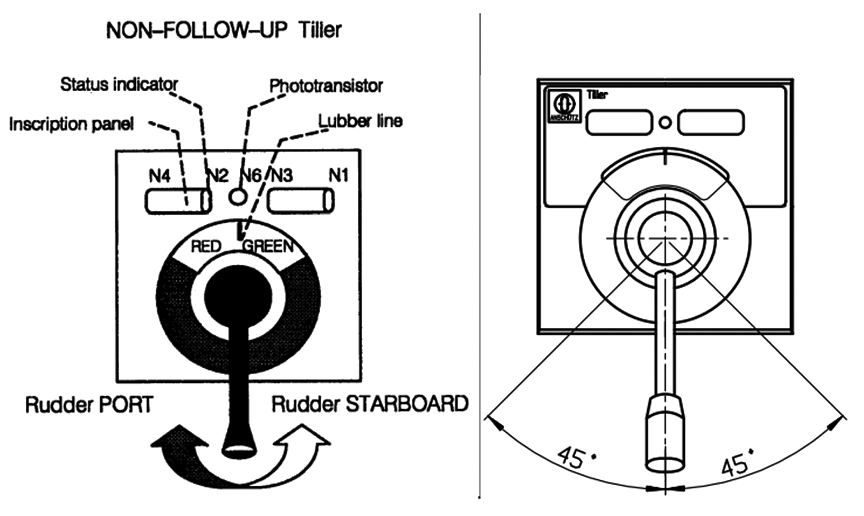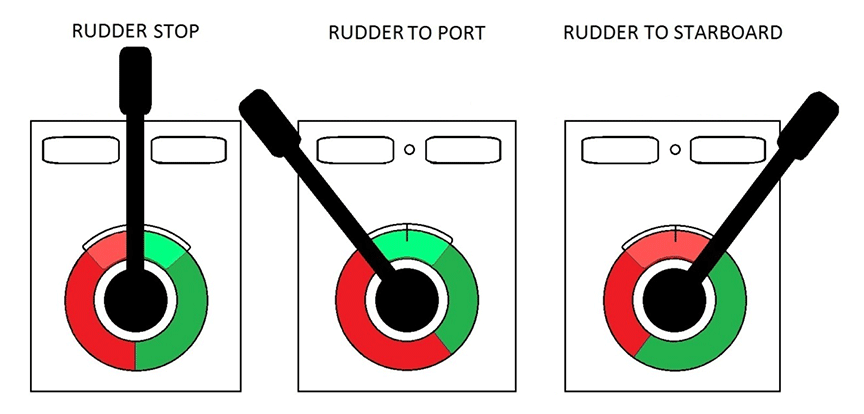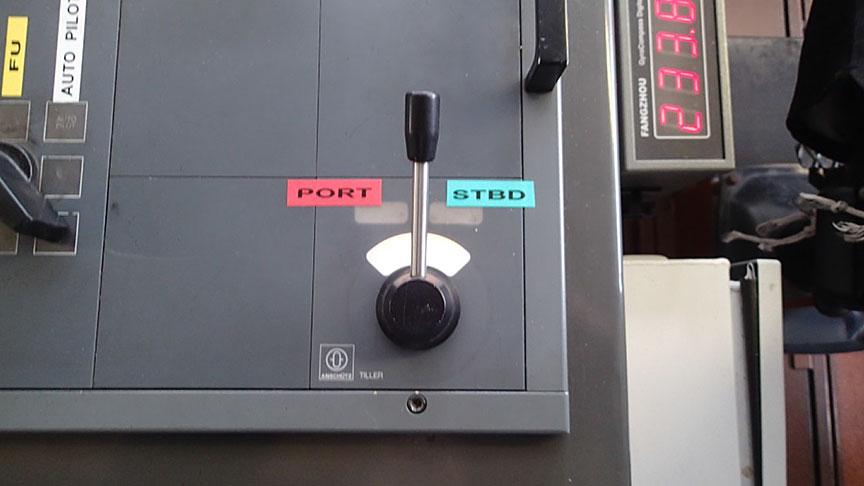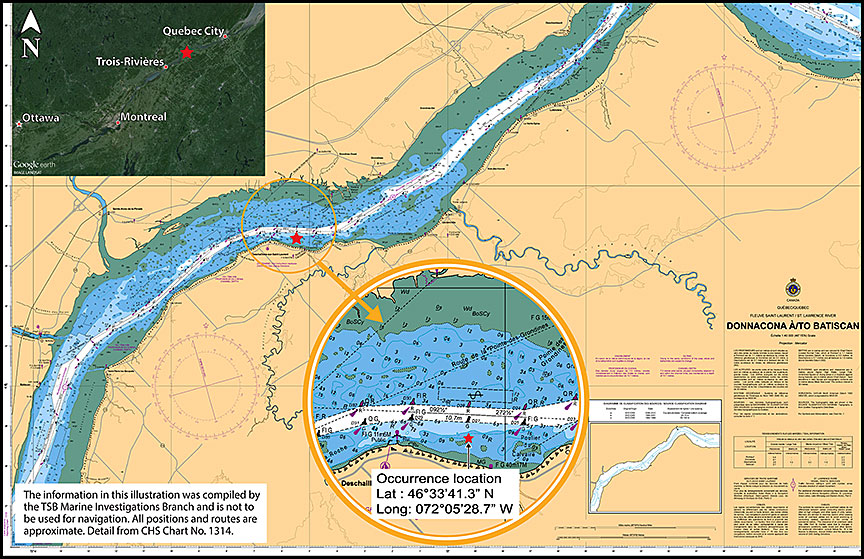Grounding
Container vessel MSC Monica
Deschaillons-sur-Saint-Laurent, Quebec
The Transportation Safety Board of Canada (TSB) investigated this occurrence for the purpose of advancing transportation safety. It is not the function of the Board to assign fault or determine civil or criminal liability. This report is not created for use in the context of legal, disciplinary or other proceedings. See Ownership and use of content. Masculine pronouns and position titles may be used to signify all genders to comply with the Canadian Transportation Accident Investigation and Safety Board Act (S.C. 1989, c. 3).
Summary
On 22 January 2016, the container vessel MSC Monica ran aground on the St. Lawrence River 1 nautical mile north-northeast of Deschaillons-sur-Saint-Laurent, Quebec. The vessel was refloated the following day with the assistance of 3 tugs and proceeded to Québec, Quebec, to undergo the necessary inspections. The vessel sustained minor damage to the hull and major damage to the 4 propeller blades. There were no injuries, and no pollution was reported.
This report is also available in English.
1.0 Factual information
1.1 Particulars of the vessel
| Name of vessel | MSC Monica |
|---|---|
| International Maritime Organization number | 9060649 |
| Port of registry | Panama |
| Flag | Panama |
| Type | Container vessel, gearless, fully cellular |
| Materials | Steel |
| Gross tonnage | 37 398 |
| Length, overall | 242.81 m |
| Draft (maximum) | 12.10 m |
| Drafts at time of occurrence | Forward: 5.80 m Aft: 8.30 m |
| Built | 1993, Samsung Shipbuilding & Heavy Industries Company Limited, Geoje, Republic of Korea |
| Propulsion | 1 low-speed 2-stroke diesel engine (24 500 kW) driving a single 4-blade fixed-pitch propeller |
| Cargo | 709 freight containers (9199.70 tonnes) |
| Crew | 25 |
| Registered owner | Compañia Naviera Monica S.A., Panama |
| Manager | Mediterranean Shipping Company (MSC) Shipmanagement Limited, Cyprus |
1.2 Description of the vessel
The MSC Monica (Figure 1) is a double-hulled, gearless, fully cellular container vessel with a capacity of 3424 TEU,Footnote 1 including provisions for 198 refrigerated containers. The vessel is built of steel and has 7 cargo holds sealed by 13 hatch covers. The machinery spaces and accommodations are located 63.4 metres ahead of the stern. The vessel is propelled by a diesel engine rated at 24 500 kW, directly driving the propeller at a maximum speed of 95 revolutions per minute. The vessel also has a 900 kW electric bow thruster.
The bridge control console is located starboard of the centreline of the vessel and includes the conning station, main engine controls, and bow thruster controls.
The navigation bridge is also fitted with the following navigational equipment: an echo sounder, an electronic chart display and information system (ECDIS), 2 radars (fitted with automatic radar plotting aid capability), a global positioning system (GPS), an automatic identification system (AIS), and 2 very high frequency (VHF) radiotelephones. The chart table and the Global Marine Distress and Safety System (GMDSS) console are located aft of the main console, on the starboard side of the navigation bridge.
1.2.1 Design of steering system
The steering gear on the MSC Monica is controlled via a control panel located on the bridge main console. The control panel enables the bridge crew to toggle between the different steering modes: follow-up, non-follow-up (NFU), autopilot, and the port or starboard wing consoles. The steering wheel (commonly referred to as the helm) and the NFU tiller are part of the conning station on the bridge main console (Figure 2). The starter switches for the 2 steering gear motors are on the bridge main console to the left of the conning station.
1.2.1.1 Follow-up mode
Follow-up mode is the most common way to steer a vessel in restricted waters. In this mode, the helm can be turned to port or starboard so as to request a rudder order between 0° and 35°. The steering system receives feedback of the actual rudder angle and makes automatic adjustments to ensure that it corresponds to the angle requested by the helm at all times.
On the MSC Monica, the helm at the conning station on the bridge main console is used to steer when the vessel is in follow-up mode. A rudder order indicator in front of the helm (Figure 2) displays the order input to the steering gear. A ceiling-mounted, 3-face rudder angle indicator is installed on the centreline of the navigation bridge, showing the actual position of the rudder (Figure 3).
1.2.1.2 Non-follow-up mode
NFU mode is a backup method of steering that can be used if the follow-up mode fails; it acts remotely on the steering gear's hydraulic solenoid valves, with no feedback. In NFU mode, the tiller can be moved to the left or right, which in turn moves the rudder towards port or starboard, depending on the design of a specific NFU tiller: for instance whether it is a toggle switch or a joystick (Figure 4 and Figure 5). On some models, moving the tiller to the left moves the rudder to starboard, while on others moving the tiller to the left moves the rudder to port. In this mode, the helmsman must hold the tiller until the rudder reaches the required angle, then release the tiller to stop the rudder's movement. If external forces or other conditions move the rudder from the desired angle, the helmsman must manually reposition the rudder using the tiller.
On the MSC Monica, the NFU tiller is located in front of the helm, on the starboard side of the steering gear control panel. At the time of the occurrence, it consisted of a lever with the longer end pointing toward the bow of the vessel. At the base of the lever was a translucent plastic disc with one half coloured green and the other red. At the top, across the two halves where they met, was a strip of light that backlit that portion of the base, 25 percent of its total circumference (Figure 6).
According to the manufacturer of the NFU tiller switch on the MSC Monica, "if the rudder […] is intended to moved [sic] to port, the control lever of the [t]iller must be turned until its port stop is reached."Footnote 2 In the standard installation of this particular NFU tiller, the control lever is mounted downward with the longer end of the lever pointing towards the stern of the vessel. When it is installed in that way and the rudder needs to be moved to port, the control level must be moved left in a clockwise rotation, bringing the red part of the indicating disc in front of the lubber line (Figure 7).
By internationally recognized maritime standards, the colour red signifies the port side, while the colour green indicates the starboard side. On the MSC Monica, the NFU tiller was connected to the control system in an inverted manner; as a result, the red/green colour code operated in contradiction to the international standards. When the control lever of the NFU tiller switch was moved to the left, in a counterclockwise rotation, the green part of the indicating disc was brought over the illuminated section, and the steering gear moved the rudder to port. When the control lever of the NFU tiller was moved to the right, in a clockwise rotation, the red part of the indicating disc was brought over the illuminated section, and the steering gear moved the rudder to starboard (Figure 8).
1.2.2 Design of the rudder
The rudder of the MSC Monica is made of steel and is of the streamlined, semi-balanced (60.4%) type, with an area of 38.89 m2. The maximum angle the rudder reaches, on both port and starboard sides, is 35°.
1.2.3 Voyage data recorder
The purpose of a voyage data recorder (VDR) is to record and safeguard critical information and parameters relating to the last hours of a voyage in order to help relevant authorities with their investigations into the causes and contributing factors of an occurrence.
The MSC Monica was fitted with a simplified voyage data recorder (S-VDR), as required by regulation. According to the International Maritime Organization (IMO), "[t]he S-VDR is not required to store the same level of detailed data as a standard VDR, but nonetheless should maintain a store, in a secure and retrievable form, of information concerning the position, movement, physical status, command and control of a vessel over the period leading up to and following an incident."Footnote 3 The S-VDR should record the date, time, position, speed, heading, bridge audio, communications audio, displayed radar data, and AIS data.Footnote 4 The S-VDR had a certificate of type approval and had undergone a mandatory annual performance test on 31 August 2015. The service report stated that all functions were checked and had passed.
Following the occurrence, Transportation Safety Board of Canada (TSB) investigators extracted all of the data recorded by the S-VDR. In addition to the minimum data, the S-VDR also recorded the rate-of-turnFootnote 5 (ROT) of the vessel; it did not record the rudder orders and positions, nor was it required by regulation to do so.
1.3 History of the voyage
Canada protects voice recordings by making all on-board recordings —including VDR and S-VDR— privileged in the Canadian Transportation Accident Investigation and Safety Board Act. While the TSB may make use of any on-board recording in the interests of transportation safety, it is not permitted to knowingly communicate any portion of an on‑board recording that is unrelated to the causes or contributing factors of an accident or to the identification of safety deficiencies.
The reason for protecting VDR and S-VDR material lies in the premise that these protections help ensure that crew members and pilots will continue to express themselves freely and that this essential material is available for the benefit of safety investigations. The TSB has always taken its obligations in this area very seriously and has vigorously restricted the use of VDR/S-VDR data in its reports. Unless the VDR/S-VDR material is required to both support a finding and identify a substantive safety deficiency, it will not be included in the TSB's report.
To validate the safety issues raised in this investigation, the TSB has made use of the available S-VDR information in its report. In each instance, the material has been carefully examined in order to ensure that it is required to advance transportation safety.
On 22 January 2016, the MSC Monica departed Montréal, Quebec, and navigated the St. Lawrence River downbound towards Saint John, New Brunswick. At approximately 0615,Footnote 6 the regular change of pilots off Trois-Rivières, Quebec, occurred, and 2 pilots from the Corporation des pilotes du Saint-Laurent central (CPSLC),Footnote 7 Pilot No. 1Footnote 8 and Pilot No. 2, boarded the vessel. A formal master/pilot exchange was conducted; during this exchange both pilots acknowledged the content of the pilot card while the master briefed them on the vessel's particulars and manoeuvring characteristics. During the exchange, the pilots and master also discussed the voyage plan through the river towards the next change of pilots, which was to occur off Québec, Quebec.
The MSC Monica continued downbound at an average speedFootnote 9 of 13.5 knots. At 0724, after the pilots assessed the external conditions such as the visibility and the upbound traffic, the speed was increased. The master left the navigation bridge at 0735. At that time the bridge team consisted of the officer of the watch (OOW), the helmsman, and the 2 pilots.
At 0745, Pilot No. 2, who was conning the vessel at the time, altered course from the "Route de l'Anse-des-Grondines" (047°[True - T]) towards the "Route de la Pointe-des-Grondines" (066½°T), and then started veering the vessel towards the "Route de Sainte-Emmélie" (092½°T) using multiple intermediate courses.Footnote 10 At 0756, Pilot No. 2 ordered 085°(G)Footnote 11 to the helmsman. At 0757:51,Footnote 12 the helmsman reported having steadied the vessel at 085°G, and the ROT of the MSC Monica dropped to 0° per minute.
At 0758:33, the ROT increased to 12° per minute and the vessel started to veer towards the starboard side. Twenty seconds later, Pilot No. 2 informed Pilot No. 1 that the vessel was changing course without having ordered any alteration. The helmsman then told Pilot No. 2, "not working." In response, Pilot No. 2 asked "it's not responding?" to which the helmsman replied, "it's not." The speed of the vessel was 16.7 knots at that time.
Immediately, Pilot No. 1 gave the order "follow-up" to the crew, which he repeated 7 times. Meanwhile, Pilot No. 2 ordered the OOW to call the master and the engine room to report the failure of the steering gear. As the vessel was already in follow-up mode, no action was taken. Instead, the OOW followed Pilot No. 2's orders and then activated the general alarm bell. At 0759:29, Pilot No. 1 moved to the conning station and operated the steering mode control switch directly, in order to change from follow-up to NFU mode, while the OOW said to Pilot No. 1 "this is non-follow-up, Sir." Pilot No. 1 then activated the handle of the NFU tiller. The ROT increased, peaking at 36.4° per minute, and the vessel accentuated its sheer to the starboard side.
At 0759:40, Pilot No. 1 ordered "hard to port" and, at 0759:45, he ordered the main engine to be stopped. At 0759:53, Pilot No. 1 ordered "emergency" and, at 0800:11, he reported to the master, who had just arrived on the navigation bridge, that they had "completely lost the steering" and that the vessel was going aground. At the same time, the chief engineer, who had just arrived in the engine control room, observed that the rudder angle indicator was at 35° to starboard (hard-a-starboard). Simultaneously the second engineer, alarmed by the telephone call from the OOW, left the engine control room and arrived in the steering gear compartment. He observed the rudder being at the hard-a-starboard position. He manually activated the telemotor's electro-hydraulic valve and confirmed that the steering gear's actuators and hydraulics were operational.
At 0800:29, as the vessel was exiting the navigation channel, the OOW noticed that the rudder was positioned hard-a-starboard and brought the handle of the NFU tiller to the left, while saying to the pilots, at 0800:37, that they had previously given a starboard command on the NFU tiller; the steering gear positioned the rudder at 35° to port (hard-a-port), and the ROT diminished. At 0800:54 Pilot No. 2 mentioned to Pilot No. 1 that the vessel was "far outside". At 0800:55, Pilot No. 1 called the Québec Marine Communications and Traffic Services (MCTS) on the VHF radiotelephone and reported that the vessel had lost its steering capability.
At 0801:18, as the MSC Monica's speed had diminished to 10 knots, Pilot No. 1 ordered the main engine to full astern. At 0801:26, the vessel started to veer to port. At 0801:54, Pilot No. 1 asked the master not to drop anchor as it was too late to prevent the vessel from running aground. At 0802:03, the vessel went agroundFootnote 13 on the south side of the river, just east of Deschaillons-sur-Saint-Laurent, Quebec (Appendix A). The master stopped the main engine 13 seconds after the vessel had been immobilized.
Following the pilots' orders to the master, all of the vessel tanks were sounded for water ingress and 2 crew members were posted as lookouts to monitor for signs of pollution in the water around the vessel. At 0809:40, as the tide was ebbing, an initial attempt was made to free the MSC Monica and the main engine was put to full astern for 5 minutes. After the pilots confirmed that the vessel was not moving, the engine was ordered to a stop.
On 23 January 2016, at 0730, Pilot No. 1 and Pilot No. 2 were relieved from duty by 2 other pilots from the CPSLC. The MSC Monica was refloated with the assistance of 3 tugs during the flooding tide at 1918 that evening and was escorted to the safe anchorage zone off Grondines, Quebec. In the morning of 24 January 2016, the vessel weighed anchor and proceeded downstream, under a tug escort, towards Québec, where it moored at 1211.
Before the vessel's departure from Québec, the crew modified the NFU tiller display: they removed the translucent plastic disc attached to its base and posted colour‑coded labels (red with the word "PORT" and green with "STBD," the abbreviation for starboard) on either side of the NFU tiller (Figure 9).
1.4 Damage to the vessel
The MSC Monica sustained major damage to the 4 propeller blades. The vessel's structure was also damaged in way of the starboard ballast water tank No. 3, where the shell plating and web frames 82, 83, 84, and 85 were distorted between the tank top and the first stringer. The port bilge keel was distorted, while the starboard side of the rudder, both sides of the bow, and the entire port-side length of the hull sustained minor damage consisting of scratches on the hull coating and shell plating.
1.5 Environmental conditions
On 22 January 2016, the high tide at Deschaillons-sur-Saint-Laurent, was at 0748 and was recorded at 2.325 metres, 0.075 metre less than predicted. The high tide at Québec, occurred at 0500. The wind was 8.1 knots at 280°T. The temperature was −9.8 °C, and the relative humidity was 68%.
1.6 Vessel certification
The MSC Monica carried all of the required certificates for a vessel of its class and for the intended voyage. Its last periodic (annual) inspection was carried out on 04 October 2015 by the Flag State's recognized organization.
1.7 Personnel experience and certification
The crew members of the MSC Monica were all properly certified for their positions on board. The crew consisted of 23 Indians, 1 Bangladeshi, and 1 Pakistani.
The master held a Master's certificate of competency and had sailed as a master on various vessels since 2000. He joined the MSC Monica on 19 December 2015. This was his first contract on board the vessel and with this company. The master had also completed bridge resource management (BRM) training.
The chief engineer held a Chief Engineer Officer's certificate of competency issued in 1992. He had sailed as a chief engineer on various vessels since 1994. He joined the MSC Monica in September 2015. This was his first contract on board the vessel and with this company.
The OOW held a Chief Mate's certificate of competency issued in 2013, and had been sailing as Chief Officer for less than 1 year. He had been employed by this company since he first sailed in 2006, and joined the MSC Monica in November 2015.
The helmsman had been sailing since 1995 and was issued an Able Seaman's certificateFootnote 14 in 1999. He joined the company in 2006 and the MSC Monica on October 2015. This was his first contract on board the vessel.
Pilot No. 1 held a Master Mariner certificate and had obtained his Laurentian Pilotage Authority (LPA) Class A pilot licence in 2008. Pilot No. 2 held a Master Mariner certificate and had obtained his LPA Class A pilot licence in 2013. Both pilots had completed BRM training.
1.8 Pilotage in the St. Lawrence River
Pilotage in the St. Lawrence River is compulsory by regulationFootnote 15 due to the difficulties and hazards involved in its navigation. The LPA is the federal Crown corporation responsible for providing safe and efficient pilotage services within the St. Lawrence River area,Footnote 16 and has responsibilities such as establishing compulsory pilotage areas and issuing pilot licences and pilotage certificates.Footnote 17 The LPA contracts 2 corporations of pilots with a total of 185 licensed pilots and apprentice pilots for operations within 2 districts.
The CPSLC covers District No. 1, the sector between Montréal, Quebec, and Québec, Quebec, and is divided into 2 zones: Montréal/Trois-Rivières, and Trois-Rivières/Québec. The Corporation des pilotes du Bas Saint-Laurent (CPBSL) covers District No. 2, the area between Québec and Les Escoumins, Quebec, including the Saguenay River.
Between Québec and Montréal, the navigation channel has a minimum depth of 11.3 metres and a minimum width of 229 metres,Footnote 18 and is marked throughout by range lights and buoys. These buoys are either removed or replaced with spar buoys by the Canadian Coast Guard (CCG) before the winter navigation season; for this reason, 2 pilots are assigned by the LPA on all vessels in this sector during the winter.Footnote 19 The LPA states that, during such an assignment, the 2 pilots are required to perform pilotage duties in order to ensure the conduct of the vessel.Footnote 20
1.8.1 Helm orders
During the transit of a vessel through restricted waters where pilotage is compulsory, a professional relationship is established between the pilot, who is conning the vessel, and the helmsman; ultimately the pilot issues the orders and the helmsman must follow them. The pilot has the prerogative to order the vessel to be steered on a specific courseFootnote 21 or to request specific rudder angles to port or starboard.
Whenever the vessel is underway and the pilot orders a course to be followed, the helmsman has the responsibility to determine the required rudder angle and to apply the necessary helm order on the steering gear controls. During a course change, the helmsman will rely on the gyrocompass or look out the bridge windows to assess the ROT of the vessel.Footnote 22 The helmsman also determines the constant adjustments to be made to the rudder angle, in conjunction with all of the external factors (winds, currents, bank suction, vessel speed, etc.) to ensure constant and precise course changes and to keep the vessel going steadily on the course ordered by the pilot.
Pursuant to this method, the pilot would start by ordering the course and the helmsman would confirm the order by verbally repeating it. After the vessel is steady on the ordered course, the helmsman would report back to the pilot by calling out the course once more.Footnote 23
At the time of the occurrence, the helmsman of the MSC Monica was relying on the rudder order indicator, located in front of the helm, and by looking out the bridge windows to evaluate the response of the vessel against the rudder orders. It was reportedly the on-board practice for the helmsmen to verbally report when more than 10° of rudder, to port or starboard, was required to keep the vessel steady on course. This was an internal, informal practice and was not done on all vessels in the company's fleet. This practice was not documented but was understood by the master, the navigation officers, and the helmsmen. It was not intended to restrict the helmsmen's discretion to position the rudder at any required angle, but to provide the bridge team with an objective parameter on the MSC Monica's behaviour; for instance, giving the information that the vessel's speed had dropped to a point at which it was more difficult to handle. The 2 pilots did not know about this reporting practice and were not told about it during the master/pilot exchange.
1.8.2 Handling of shipboard equipment by pilots
As soon as a pilot arrives on the navigation bridge and before the pilot takes the conduct of the vessel, a formal master/pilot exchange takes place. The pilot consults the vessel's pilot card and is briefed by the master on the vessel particulars and manoeuvring characteristics. They discuss the local environmental conditions, the intended passage plan, the use of tug(s), and the mooring arrangements, if applicable. The pilot is also shown the location of some critical navigational equipment such as the radars, the fixed connection to the vessel AIS (the AIS pilot plug), and the VHF radiotelephones. The master/pilot exchange is not required to, nor is it intended to, include any training for the pilots on the use and operation of the propulsion telegraph and the steering gear control systems.Footnote 24
The pilot who has the conduct of a vessel is legally empowered to directly operate the shipboard navigational equipment. Because a wide variety of designs, types, and arrangements of propulsion telegraphs and steering gear controls exists in the worldwide merchant fleet, and in light of a TSB investigation into a previous marine occurrence,Footnote 25 some pilotage organizations have established internal policies providing guidance for their pilots with regard to the handling of shipboard equipment, while others do not have an official position on this matter.
The CPBSL requires that its pilots not directly operate the manoeuvring equipment, such as the propulsion telegraph and bow thruster, and that they not take the place of the helmsman at the helm unless warranted by an emergency situation. According to the CPBSL, pilots conduct a vessel by giving the necessary orders to the crew members assigned to the navigation bridge; otherwise, the safety of the vessel could be compromised.Footnote 26
The CPSLC does not have a formal policy regarding pilots' handling of shipboard equipment; however, during their two-year period of apprenticeship, CPSLC pilots–in-training are advised to not directly operate the shipboard manoeuvring equipment, such as the propulsion telegraph, steering gear, and bow/stern thruster. The apprentice pilots receive this advice during their mandatory training voyages on the St. Lawrence River with senior pilots, and during the in-class BRM training sessions. The CPSLC considers that there are advantages for the pilot to verbally communicate the orders to the master, OOW, and helmsman as opposed to directly operating the equipment: it keeps the entire bridge team aware of the status of the vessel's progress and ensures that the vessel's VDR captures and keeps on record the orders given by the pilot.Footnote 27
The Canadian Marine Pilots Association (CMPA) states that, during an emergency, to ensure the safety of the vessel, pilots are not only allowed to but must intervene by operating the manoeuvering equipment directly and physically, should it be deemed necessary by the pilots.Footnote 28
Upon boarding the MSC Monica off Trois-Rivières, the 2 pilots were not familiarized with the use and operation of the steering control system. They were unaware that the NFU tiller was installed in the inverse position, that the red/green indicating disc was inverted, and that the switch was incorrectly connected to the steering gear control system, contrary to the technical specifications set out by the system manufacturer. The crew of the MSC Monica, meanwhile, was aware of the particular configuration of the NFU tiller.
1.9 Proficiency in English
1.9.1 Requirements, testing, and maintenance of knowledge
Because English is the worldwide language of maritime operations, there are international requirements for vessel crew members with regard to proficiency in English. For instance, every crew member who is part of the bridge team during a navigational watch, such as the helmsman, the OOW, and the master, must fulfill specific requirements.
Helmsmen who hold a rating forming part of a navigational watch must be able to comply with helm orders given in English; communications must be clear and concise at all times and orders are to be acknowledged in a manner that demonstrates good seamanship. The helmsman is also expected to be able to understand orders and to communicate in English with the OOW on matters relevant to their watchkeeping duties.Footnote 29 This competency can be confirmed either by a practical test or approved experience (gained in service or through training).
On the MSC Monica, the OOWs and the helmsmen talked amongst themselves in Hindi.Footnote 30 Although all of the officers were fully proficient in English, some of the other crew members were unable to adequately express themselves verbally in English.
The helmsman'sFootnote 31 proficiency in English was limited to the minimal requirements set out in the International Convention on the Standards of training, certification and watchkeeping for seafarers (STCW Convention) with regard to the capability to acknowledge and comply with any given helm order; however, all other matters relevant to the watchkeeping duties were being communicated with the OOW in Hindi.
CPSLC pilots must be able to speak and understand both English and French to the extent necessary to carry out pilotage duties.Footnote 32 Those applying to be an apprentice pilot must pass a language test that demonstrates their ability to work in English and French.Footnote 33 Both pilots in this occurrence were fluent in English and French.
1.9.2 Communication
In 1995, the TSB conducted a survey of Canadian marine pilotsFootnote 34 to identify safety deficiencies associated with teamwork on the bridge, including communications between marine pilots and masters/OOWs.
- When pilots were asked whether language barriers make it difficult to communicate orders to the helmsman on foreign-registered vessels, 60% responded that language barriers "sometimes" affect communication with the helmsman, while 20% reported that it "often" resulted in difficulty communicating.
- When pilots were asked whether language barriers prevent an effective exchange of information with the master and the OOW on foreign-registered vessels, nearly 55% replied that language barriers "sometimes" prevent effective communication with the master and the OOW, while 23% stated that language barriers "often" prevent it.
A second survey in 2014Footnote 35 revealed that the pilots' views regarding language issues on foreign-registered vessels remained similar to the 1995 survey.
- 49% of pilots thought that language barriers "sometimes" affect communication with the helmsman, while 15% indicated that language barriers "often" result in communication difficulties.
- 54% of pilots surveyed indicated that language barriers "sometimes" prevent effective communication with the master and the OOW, while 17% stated that language barriers "often" prevented it
The first language of the 2 pilots was French. The MSC Monica's bridge crew were Indian and their working language was Hindi. During the voyage, the bridge team communicated in English.
Cultural factors can also play a role in communication and hence the effectiveness of BRM. "Power distance" refers to the extent to which members of a culture feel comfortable with hierarchy and power imbalance in personal and business relationships. Research has shown that cultures vary in terms of power distance.Footnote 36 Cultures with high power distance are more comfortable with power imbalance, which means that people in less powerful positions may be reluctant to question or challenge authority figures.Footnote 37 Cultural differences in power distance may contribute to poor communication between marine pilots and bridge teams.Footnote 38 The U.S. National Transportation Safety Board has recommended that a segment on cultural and language differences and their possible influence on mariner performance be included in the IMO's BRM curricula.Footnote 39
1.10 Bridge resource management
BRM is the effective management and use of all resources, both human and technical, available to the bridge team to ensure the safe completion of a voyage. BRM includes concepts such as workload management, problem solving, decision making, and teamwork. Situational awareness and communication are key to BRM; specifically, bridge team members have a responsibility to maintain overall situational awareness as well as be responsible for their individual duties.
Groupthink is a propensity that may arise for members of a group, such as a bridge team, to seek consensus while problem solving and for some not to express doubts, potentially leading to alternative solutions being ignored. Free team discussion and generation of ideas are strategies to minimize the risk of groupthink.Footnote 40
As of 01 January 2005, the General Pilotage Regulations require all licensed marine pilots and marine pilot applicants in Canada to hold a certificate of attendance from a BRM training program. The STCW Convention and its 2010 Manila Amendments require a demonstration of BRM competencies and knowledge in order for seafarers to obtain a watchkeeping mate certificate and require BRM training in order to obtain a Master's certificate.
1.11 Design of bridge equipment
Design guidelines for controls and displays recommend the use of compatibility, which is the degree to which design relationships between elements are consistent with human expectations. Movement compatibility is the relationship between movement of displays and controls where the direction of the movement of a control follows the expectations of the user.Footnote 41 For NFU tillers, movement compatibility can be achieved by 2 different means. First, some designs are movement and direction compatible: i.e., the tiller is positioned to the left to move the rudder to port. Second, the designs mimic the actual rudder position of the vessel: i.e., the tiller is rotated clockwise to move the vessel to port while moving ahead. The NFU tiller manufacturer's technical specifications met both of the movement/direction and rudder position compatibilities, whereas the actual installation on the MSC Monica met only the movement/direction compatibility.
According to the International Association of Classification Societies (IACS), the objective of vessel classification is to verify the structural strength and integrity of essential parts of the vessel's hull and its appendages, as well as the reliability and function of various essential systems, such as the propulsion and steering systems.Footnote 42
DNV GLFootnote 43 is the recognized organization responsible for issuing all statutory certificates on behalf of the MSC Monica's flag state administration, ensuring that the vessel complies with the relevant international conventions and national regulations.
DNV GL publishes rules on the ergonomic design of navigation bridges. These rules are intended to inform vessel designers of principles and data relevant to the design of navigation bridges. Within these rules, DNV GL specifies that "[t]he workstation arrangement shall be designed in accordance with established principles of ergonomics for safe and efficient operations, enabling the navigator to perceive all relevant information and execute pertinent actions with a minimum workload".Footnote 44 Among other requirements, the steering system of a vessel shall have an override function, the NFU mode, through a user input device (UID) such as a keyboard, tiller, joystick, helm, or pushbuttons. For manually steering the vessel in NFU mode, the UID shall employ a clockwise rotation of the device to turn the ship to starboard and anti-clockwise rotation to turn to port.
The IMO specifies that bridge controls and displays should be clearly labelled according to their function, using standardized symbols if possible. If a steering gear control is moved clockwise (to the right), it should result in the associated equipment or component moving clockwise. Controls should be selected so that the direction of movement of the control will be consistent with the related movement of an equipment component, or the vessel itself. Moreover, "the direction of motion of operating elements for manoeuvring equipment should correspond with the direction of the effect on the ship caused by the installations controlled."Footnote 45
The International Organization for Standardization (ISO) has similar guidelines with regard to the steering controls fitted on a vessel's navigation bridge.Footnote 46
1.12 Post-occurrence examination of steering gear
Following the grounding of the MSC Monica and its subsequent refloating, the TSB conducted a thorough examination of the vessel's steering gear and its associated controls; complete trials were performed to ascertain the proper functionality of the system and the alarm data logger was verified. In addition, independent shore-based steering gear specialists and automation/controls technicians, contracted by the owners, were mandated to carry out a complete verification of the systems on the vessel. DNV GL also dispatched one of its marine surveyors to inspect the steering gear system and the damage sustained to the vessel. Moreover, Transport Canada Marine Safety and Security dispatched 2 inspectors to inspect the vessel and its steering gear system. The areas examined included the local (steering compartment) and remote (bridge) controls including wiring; electrical connections; hardware such as solenoid valves, limit switches, control switches, potentiometers; and all ancillary equipment in the steering consoles. All alarms and the "Safematic"Footnote 47 system were tested for functionality. The hydraulic components of the steering gear were also verified.
The steering gear and associated controls of the MSC Monica were found to be in good working condition, and no alarm occurred on the system in the moments preceding the grounding. No defective component or system malfunction was found that could have caused a steering gear failure. The findings and corrective actions consisted of a minor readjustment of the limit switches on the stroke of the 4 hydraulic cylinders, or steering gear rams; correction of the bridge NFU tiller issues with regard to ergonomics; and a recommendation to provide adequate heating in the steering gear compartment to prevent any moisture condensation in the electrical cabinets in cold temperatures.
1.13 Reproduction of the events with navigation simulator
In operation since 1994, the Centre for Marine Simulation (CMS) is an industrial arm of the Fisheries and Marine Institute of Memorial University. CMS operates under the Marine Institute's School of Maritime Studies and is located in St. John's, Newfoundland and Labrador. CMS responds to a variety of requests ranging from vessel manoeuvring and procedural trials, performance examination and improvements, and customized training to operational efficiency reviews, marine equipment testing, and port design evaluation.Footnote 48
In order to determine the various angles at which the rudder was positioned during the occurrence and to reconstruct the likely sequence of events in the absence of rudder angle data from the S-VDR, the TSB worked with CMS to reproduce the vessel's voyage using all other recorded data to extrapolate the rudder angles during the occurrence.
CMS produced a virtual model of the MSC Monica using all of its actual hydrodynamic and manoeuvring characteristics at the time of the occurrence. The loading conditions, including the weight distribution of the cargo in the holds and the containers' location on the main deck, were also accounted for in the model. The meteorological and environmental conditions were also reproduced, including the tide-induced currentsFootnote 49 that prevailed at the time of occurrence.
Various scenarios and hypotheses were challenged. Multiple runs of the simulator were performed with the rudder being out of order at different angles, notably at 10° to port, 5° to starboard, 10° to starboard, and with the rudder amidships. These hypotheses were all found to be implausible. The use of the simulator also demonstrated that, with the main engine put to full astern at the same time a steering system failure was assumed, the virtual model exited the buoyed channel and ran aground further downriver at a speed of 3.4 knots.
The scenario that most closely reproduced the grounding of the MSC Monica is described as follows: setting the rudder at 10° to starboard, at the time when the ROT was 12° per minute and the helmsman called out "not working"; then setting the rudder at 35° to starboard (hard-a-starboard) at the exact time when the steering mode was changed from follow-up to NFU and the handle of the NFU tiller was activated.
1.14 Previous occurrences
The groundings of the general cargo vessel VaasaborgFootnote 50 on 22 May 2002 and the chemical/products tanker Halit BeyFootnote 51 on 22 April 2014 further exemplify that the issues of acquiring the proficiency and familiarity with the manoeuvring equipment, such as the steering gear and their control systems, are key to safely operating them, especially during an emergency situation when acting in a timely manner is critical.
The investigation into the Halit Bey occurrence also underlined that, if critical bridge systems, such as steering gear controls, are not designed and arranged to be straightforward and intuitive with safeguards to minimize human error, there is a risk that an operator will not be able to respond quickly and effectively in the event of an emergency.
The TSB investigations into the grounding of the bulk carrier TundraFootnote 52 on 28 November 2012 and the collision between the bulk carrier Heloise and the tug Ocean Georgie BainFootnote 53 on 03 August 2013 determined that the language barrier between the bridge crew and pilot was causal in both occurrences, contributing to challenges in communication and, consequently, to ineffective BRM at a critical time during the voyage. The cultural factors implied in the hierarchical "power distance" were also determined to be a causal factor in the Tundra occurrence, with the crew of a foreign nationality being reluctant to question or challenge the authority of the pilot and the pilot's decisions.
2.0 Analysis
2.1 Factors leading to the grounding
While navigating the St. Lawrence River downbound, the MSC Monica unexpectedly veered to starboard, exited the buoyed channel, and ran aground. Testing and examinations established that the steering gear and its control system were fully functional and that no steering failure occurred. The winds and current were not strong enough to cause the vessel's path to change, and the vessel's speed was not excessive for this particular type of vessel in this section of the river.
The Centre for Marine Simulation (CMS) simulator was used to reproduce several scenarios under the same conditions at the time of the occurrence. The results demonstrated that the most plausible scenario for causing the vessel to initiate a veering to starboard with a rate-of-turn (ROT) of 12° per minute was that the helm was originally positioned at 10° to starboard, while the course had to be maintained at 085°gyro (G). The helmsman at the time had the expectation that the helm was positioned at 10° to port. Because the intent was to maintain the course and not veer to starboard, the initial deviation from the course was due to the helm likely being inadvertently placed 10° to starboard.
The observation of the course deviation caused the helmsman to tell Pilot No. 2 "not working." However, this expression is ambiguous; it can be interpreted to mean that the system has failed or there is insufficient steering. When the pilot asked "it's not responding", the helmsman replied "it's not". The pilots and the officer of the watch (OOW) concluded that the steering gear had failed based on their interpretation of the helmsman's responses. The pilots were unaware of the informal shipboard practice for the helmsman to warn the bridge team of the need to apply rudder in excess of 10° to keep the vessel on course, which is what the helmsman was doing in this situation.
Even though this was a time-critical situation, the bridge team did not communicate well and concluded that there was a failure, without working together to verify the assumed steering failure or consider other alternatives; this is consistent with groupthink. For example, they could have immediately verified the functionality of the steering by ordering a hard-a-port while steering in follow-up mode and looking at the rudder angle indicator.
Alarmed by the developing situation, Pilot No. 1 ordered the crew to switch to follow-up mode several times, although his intent was for the crew to switch to non-follow-up (NFU) mode. Given that the vessel was already in follow-up mode, the bridge team took no action to switch the mode.
With the need to take immediate action, Pilot No. 1 proceeded to switch the steering to NFU mode himself. The pilot was not familiar with the NFU tiller, which had been installed in the inverse position, not in accordance with the manufacturer's specifications. Pilot No. 1 thus unintentionally applied a helm order of hard-a-starboard instead of hard-a-port.
With the rudder's position hard-a-starboard, the vessel's ROT increased and peaked at 36.4° per minute, increasing its sheer to the starboard side. Sixty seconds elapsed before the officer of the watch (OOW) corrected the NFU tiller to port. This was done too late to correct the deviation off course and prevent the vessel from exiting the channel and running aground.
Although the main engine was ordered to stop shortly after a steering failure was assumed by the bridge team, 1 minutes and 33 seconds had elapsed before the main engine was ordered to full astern to stop the vessel.
2.2 Steering gear and control system
NFU tiller controls and displays vary between vessels and manufacturers. The various classification societies have specific rules with regard to bridge design ergonomics, and there are multiple organizations, such as the International Maritime Organization (IMO) and the International Organization for Standardization (ISO), that issue standards specifying the exact design requirements for these controls and displays.
Although the designs of NFU tillers vary, internationally recognized maritime standards designate the colour red to signify port, while the colour green signifies starboard. On the MSC Monica, the tiller had been installed in the inverse position, contrary to the technical specifications set out by the system manufacturer of the system and the international standards for colour signification. When the tiller on the MSC Monica was moved to the left, for example, the green part of the indicating disc was illuminated and the steering gear moved the rudder to the port side.
The crew on board the MSC Monica were aware of the particular configuration of the tiller and understood how to use it to navigate. However, the pilots that had just come on board the vessel were not familiarized with this unique configuration and so, when Pilot No. 1 used the tiller, he unintentionally applied the helm order hard-a-starboard instead of the intended hard-a-port. After the vessel was refloated, colour and text labels clearly identifying the port and starboard sides were added to the NFU tiller.
If the ergonomics of critical shipboard equipment, such as an NFU tiller, are designed in a way that is confusing or contradicts expectations, there is a risk that a user who is unfamiliar with their configuration will operate them incorrectly.
2.3 Pilots directly handling controls
Pilots are legally empowered to operate the equipment directly, and, according to the Canadian Marine Pilots Association (CMPA), pilots are not only allowed to, but must intervene in an emergency situation, should it be deemed necessary by the pilots.
However, some pilotage corporations issue policies that recommend against this, as there are advantages to the separate roles taken by the crew and the pilot in navigation. Because controls and displays of critical shipboard equipment can vary widely, operators have to be trained on or at least familiarized with the use and operation of each specific arrangement to reduce the risks of incorrect use.
When pilots board a vessel, the intent of the master/pilot exchange is to cover critical information, not to familiarize the pilot with individual controls and displays. It is a common practice on board vessels in restricted pilotage waters for pilots to issue orders to the crew, who operate the navigation equipment directly.
In this occurrence, Pilot No. 1 handled the manoeuvring equipment directly to change the steering mode to NFU mode when the bridge crew did not respond to the contradictory order to change to follow-up mode. Because the pilot had not been familiarized with the particular configuration of the NFU tiller as it had been installed on board, he unintentionally set the rudder to hard-a-starboard. Although the OOW noticed the mistake and corrected the rudder to hard-a-port, it was too late to redirect the vessel and it went aground.
If marine pilots operate critical shipboard equipment without proper familiarization, there is a risk that the equipment will be operated in an incorrect manner.
2.4 Bridge team communication
As demonstrated by this occurrence and previous Transportation Safety Board of Canada (TSB) investigations, despite the development of the standard marine communication phrases (SMCP) and the STCW convention and pilotage requirements of the Convention on the Standards of training, certification and watchkeeping for seafarers (STCW Convention), there continue to be language barriers that can be problematic on board foreign-registered vessels. Not only can language barriers inhibit communication, but also cultural differences may affect relationships among the bridge team members.
Language and cultural differences may have contributed to the challenges in bridge team communication on the MSC Monica. Because Indian cultures tend to be higher on the power‑distance dimension than Western cultures such as Canada, the Indian crew members may have been less likely than individuals from Western cultures to question the pilot's authority. In this occurrence, the helmsman and other crew members did not question the pilots interpretation that there was a steering failure, nor did they attempt to intervene when one of the pilots first assumed control of the helm. Also, when the master came onto the bridge and was told that there was a loss of steering, the master did not verify this himself or ask questions about it, but took the pilots' word.
Language differences also led to the misunderstanding about the steering in the exchange between the helmsman and the 2 pilots. When the MSC Monica was veering to starboard, the helmsman needed to apply more than 10° of helm to port in order to maintain the vessel on course. When he tried to verbally express this in English to the 2 pilots, he employed the simple wording "not working," which was misinterpreted by the pilots to indicate a steering failure.
Despite the hierarchy of roles within the bridge team, it is critical that information is exchanged regularly and clearly between all parties so that all members of the bridge team are aware of an evolving problem and can take action in an efficient and timely manner. This can be particularly challenging when pilots and crew do not share the same first language.
If bridge team members do not share a complete and common understanding of an emerging problem and continuously exchange information to solve problems, there is a risk that the bridge team's response will be premature, uncoordinated, and ineffective.
3.0 Findings
3.1 Findings as to cause and contributing factors
- The MSC Monica unexpectedly veered off course to starboard due to the helm likely being inadvertently placed 10° to starboard.
- The ambiguity in the wording of the verbal exchange between Pilot No. 2 and the helmsman led the pilots and the officer of the watch to incorrectly conclude that there was a steering gear failure.
- No immediate action was taken by the bridge team to verify the functionality of the steering gear once a system failure was assumed.
- The crew did not switch to non-follow-up mode because Pilot No. 1 mistakenly issued the contradictory order to switch to follow-up mode.
- Pilot No. 1 directly handled the manoeuvring equipment to switch the steering to non-follow-up mode.
- The non-follow-up tiller was not installed in accordance with the manufacturer's specifications, nor was it installed consistently with internationally accepted standards.
- Because Pilot No. 1 was unfamiliar with the particular ergonomics of the non-follow-up tiller as it was installed on the vessel, he unintentionally applied the helm order hard-a-starboard instead of hard-a-port.
- Although the officer of the watch applied a hard-a-port rudder correction, this action was delayed. As a result, the speed of the vessel was not reduced and the vessel exited the buoyed channel and subsequently ran aground.
- The delay in ordering the main engine to be put to full astern precluded the bridge team from the possibility of deploying the anchors to prevent the grounding or to decrease the damage to the vessel with a reduced speed at impact.
3.2 Findings as to risk
- If the ergonomics of critical shipboard equipment, such as a non-follow-up tiller, are designed in a way that is confusing or contradicts expectations, there is a risk that a user who is unfamiliar with their configuration will operate them incorrectly.
- If marine pilots operate critical shipboard equipment without proper familiarization, there is a risk that the equipment will be operated in an incorrect manner.
- If bridge team members do not share a complete and common understanding of an emerging problem and continuously exchange information to solve problems, there is a risk that the bridge team's response will be premature, uncoordinated, and ineffective.
3.3 Other findings
- Some pilots' associations have policies for their pilots not to directly handle the shipboard controls but to issue verbal orders only, unless warranted by an emergency situation, while others do not have an official position on this matter.
4.0 Safety action
4.1 Safety action taken
4.1.1 Transportation Safety Board of Canada
On 02 June 2016, the Transportation Safety Board of Canada sent Marine Safety Advisory (MSA) letter 02/16 to the company that ensures the technical management and operation of the MSC Monica, in order to identify the issues with the configuration of the vessel's steering gear non-follow-up (NFU) mode controls. A copy of the letter was also sent to Transport Canada, the vessel's flag state authority, the classification society ensuring the oversight of the 5 sister vessels, the International Association of Classification Societies, and the manufacturer of the MSC Monica's steering gear control system.
4.1.2 Mediterranean Shipping Company (MSC) Shipmanagement Limited
Following the receipt of MSA letter 02/16 issued from the TSB, the owners of the MSC Monica carried out a thorough assessment of the vessel's steering gear and control systems. Although no malfunction was identified, some components were found "fragile." Consequently, the owners had several parts either overhauled or replaced during the periodic drydocking of the vessel, which took place in Turkey during the fall of 2016. Among others, the 2 hydraulic pumps were replaced, the pins, slide blocks and hydraulic cylinders (rams) were machined, and their seals were replaced with new ones. On the navigation bridge, the helm, autopilot, gyrocompass, and its repeater were replaced. The NFU tiller arm was correctly reinstalled with the longer end pointing towards the stern of the vessel according to the manufacturer's recommendations, and proper instructions were posted. Finally, the owners verified that all of the MSC Monica's sister vessels had the NFU tiller properly installed.
This report concludes the Transportation Safety Board's investigation into this occurrence. The Board authorized the release of this report on . It was officially released on .
